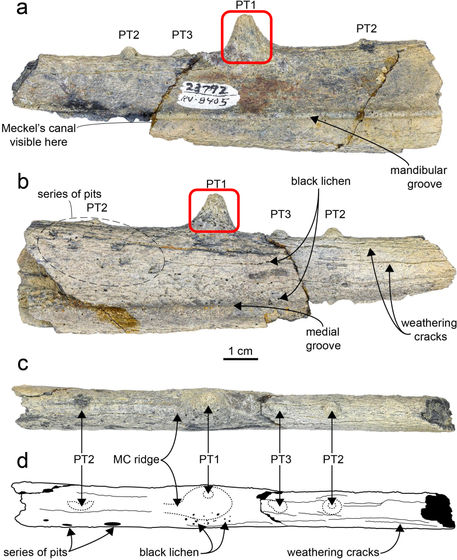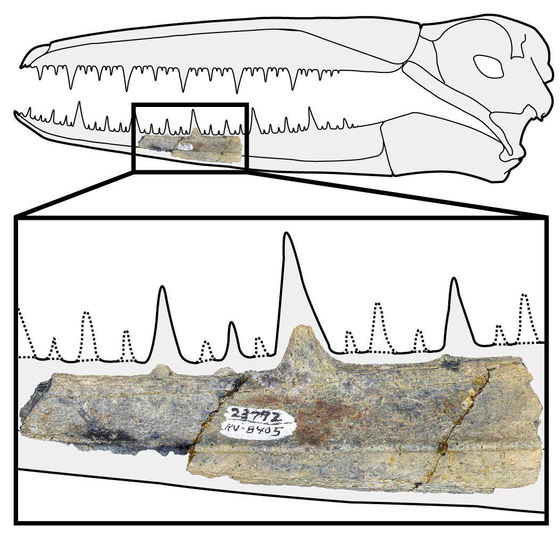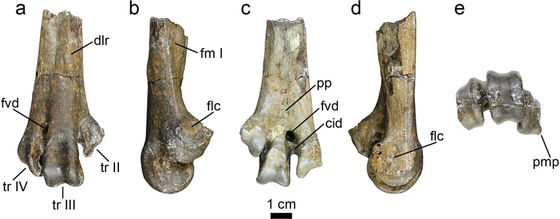Research results on 'a bird of the limit size that can fly in the sky' with a wingspan of up to 6 meters will be announced

Studies have shown that Antarctica, about 50 million years ago, was home to one of the largest known flying birds, with wingspans of up to about 6 meters. It was.
Earliest fossils of giant-sized bony-toothed birds (Aves: Pelagornithidae) from the Eocene of Seymour Island, Antarctica | Scientific Reports
Scientists Reveal What May Be the Largest Flying Bird Ever | Science | Smithsonian Magazine
https://www.smithsonianmag.com/science-nature/scientists-reveal-what-may-be-largest-flying-bird-ever-180976128/
Antarctica Yields Oldest Fossils of Giant Birds With 21-Foot Wingspans, Fearsome Toothed Beak
https://scitechdaily.com/antarctica-yields-oldest-fossils-of-giant-birds-with-21-foot-wingspans-fearsome-toothed-beak/
This time, a research group led by Peter Kloess, a paleontologist at the University of California, Berkeley, published a paper on one of the largest flying birds. Kloess, who was studying more than 10,000 materials stored in the school's paleontology museum, found a fossil of a 'toothed bird beak' in it and investigated it in detail. I made it.
Below is a photo of the fossil. This fossil is a fossil of the lower jaw of a prehistoric bird called Pelagornithidae . The beak has tooth-like protrusions called false teeth, which are believed to have helped Pelagronithidae to prey on prey fish.

The fossil was excavated by the University of California, Riverside excavation team on
'I thought this research project would be a little report to increase the cool bird trivia,' Kloess said of his initial feelings when he began to analyze fossils.
However, when the research team restored the skull of an individual that left fossils, it turned out that this individual is one of the largest known Pelagornithidae individuals. Kloess said that the fossil owner in question had a wingspan of about 5 to 6 meters, based on previous research that considered the size of the body determined from the distance between the false teeth and the size of the Pelagornithidae. It may be the largest pelagic bird ever discovered. '

The largest extant and flying bird, the
In addition, Kloess found another fossil of Pelagornithidae in the museum. The fossil was initially estimated to date from about 43 to 35 million years ago, but as a result of Kloess et al.'S reexamination of the strata where the fossil was excavated, the fossil is now about 5,000. It turned out to be a million years old.

Co-author of the paper, Thomas Stidham, said of Pelagornithidae, 'This extinct giant, which seems to have lived like a modern albatross, has very long, sharp-shaped wings, and whales and others still dominate the ocean. It is probable that they flew around the open ocean in the days when they did not, and preyed on fish and squid with beaks lined with sharp fake teeth. It must have been a terrifying predator that evolved to reign at the top of the ecosystem. '
Kloess also commented that the fossils discovered in the 1980s brought new insights: 'If this specimen wasn't visible, it wouldn't have been discovered. Researchers have investigated this fossil. The fact that it exists in a way that it can do is incredibly valuable. '
Related Posts:







